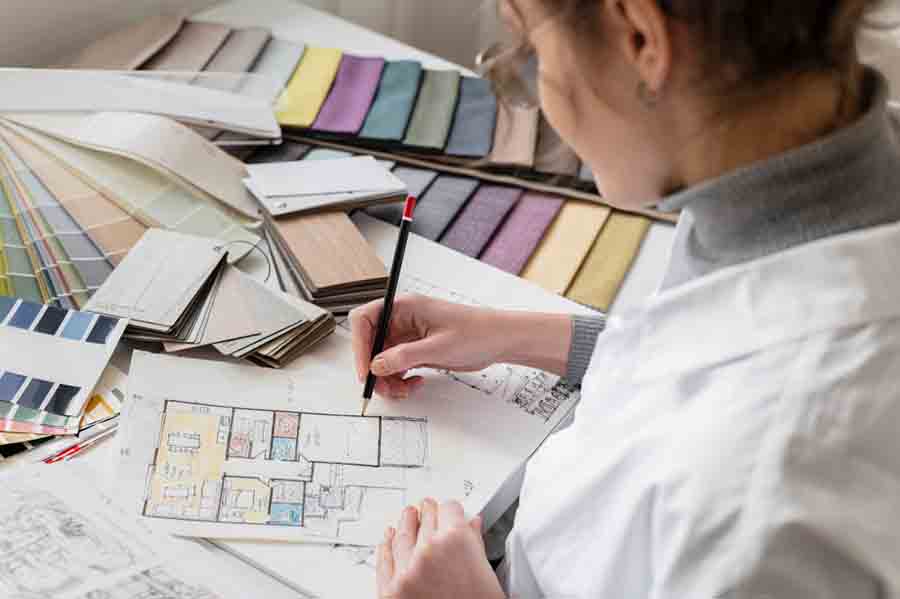by Graphic & Cadd
Share

Introduction
Interior design is a field that goes beyond decorating rooms; it’s about transforming spaces into functional, aesthetically pleasing environments. While some may argue that innate creativity is all one needs to excel in this field, there’s no denying the pivotal role that interior design courses play in honing and nurturing that talent. In this article, we will explore the importance of interior design courses and how they equip individuals with the skills and knowledge necessary to thrive in this dynamic and rewarding profession.
1. Cultivating Creativity
Interior design courses act as incubators for creativity. They encourage students to think outside the box, pushing boundaries and exploring innovative design concepts. These courses expose students to a wide range of design styles, materials, and techniques, fostering a creative mindset that can be applied to various projects. Through coursework, projects, and mentorship, students learn to unleash their artistic potential and develop a unique design voice.
2. Technical Proficiency
Creativity alone is insufficient without the technical knowledge required to bring ideas to life. Interior design courses provide a comprehensive foundation in design principles, spatial planning, color theory, and construction techniques. Students learn to create detailed floor plans, select appropriate materials, and understand the technical aspects of lighting, plumbing, and HVAC systems. This technical proficiency is vital for ensuring that designs are not only visually appealing but also functional and safe.
3. Industry-Relevant Skills
The interior design industry is constantly evolving, with new materials, technologies, and design trends emerging regularly. Interior design courses are designed to keep students updated with these changes. They incorporate the latest software applications for design and 3D modeling, familiarizing students with the tools used in the profession. Additionally, courses often include real-world projects and internships, allowing students to gain practical experience and build a portfolio that reflects their abilities.
4. Building a Strong Foundation
Interior design courses offer a structured curriculum that covers a wide range of topics, from design history to project management. This comprehensive approach ensures that students acquire a well-rounded education in the field. They learn about the evolution of design styles, the importance of cultural and historical context, and the significance of sustainable design practices. This foundation prepares them to handle diverse projects and make informed design decisions.
5. Networking Opportunities
Enrolling in interior design courses provides students with the opportunity to connect with industry professionals, fellow students, and potential employers. Many courses incorporate guest lectures, workshops, and field trips, allowing students to interact with experienced designers and gain insights into the profession. These connections can be invaluable when seeking internships, job opportunities, or mentorship.
6. Professional Certification
Interior design courses often lead to professional certification. In many countries, becoming a certified interior designer requires completing an accredited program and passing a certification exam. Earning this certification can significantly enhance one’s credibility and career prospects in the industry.
Conclusion
Interior design courses are more than just a path to a diploma or degree; they are a gateway to a fulfilling and dynamic profession. These courses provide students with the knowledge, skills, and creative mindset needed to excel in the field of interior design. Whether you’re a budding designer or someone looking to transition into a new career, enrolling in interior design courses can be a transformative step toward realizing your passion and making a meaningful impact on the spaces we inhabit. In the world of design, education is the key to turning imagination into reality, and interior design courses are the compass guiding aspiring designers on their journey to success.
STAY IN THE LOOP

